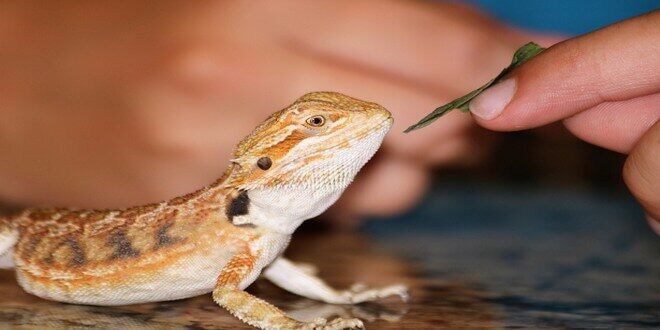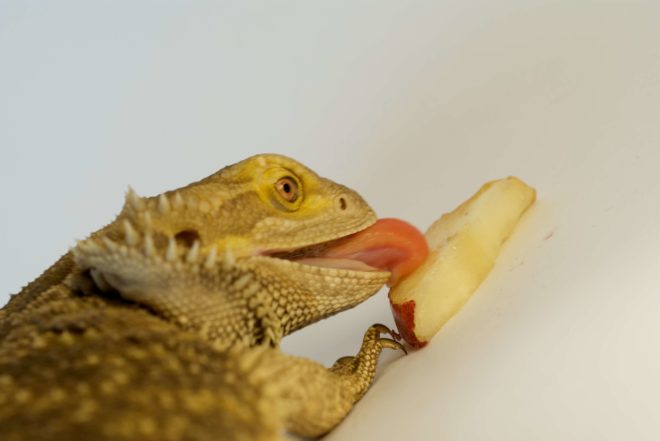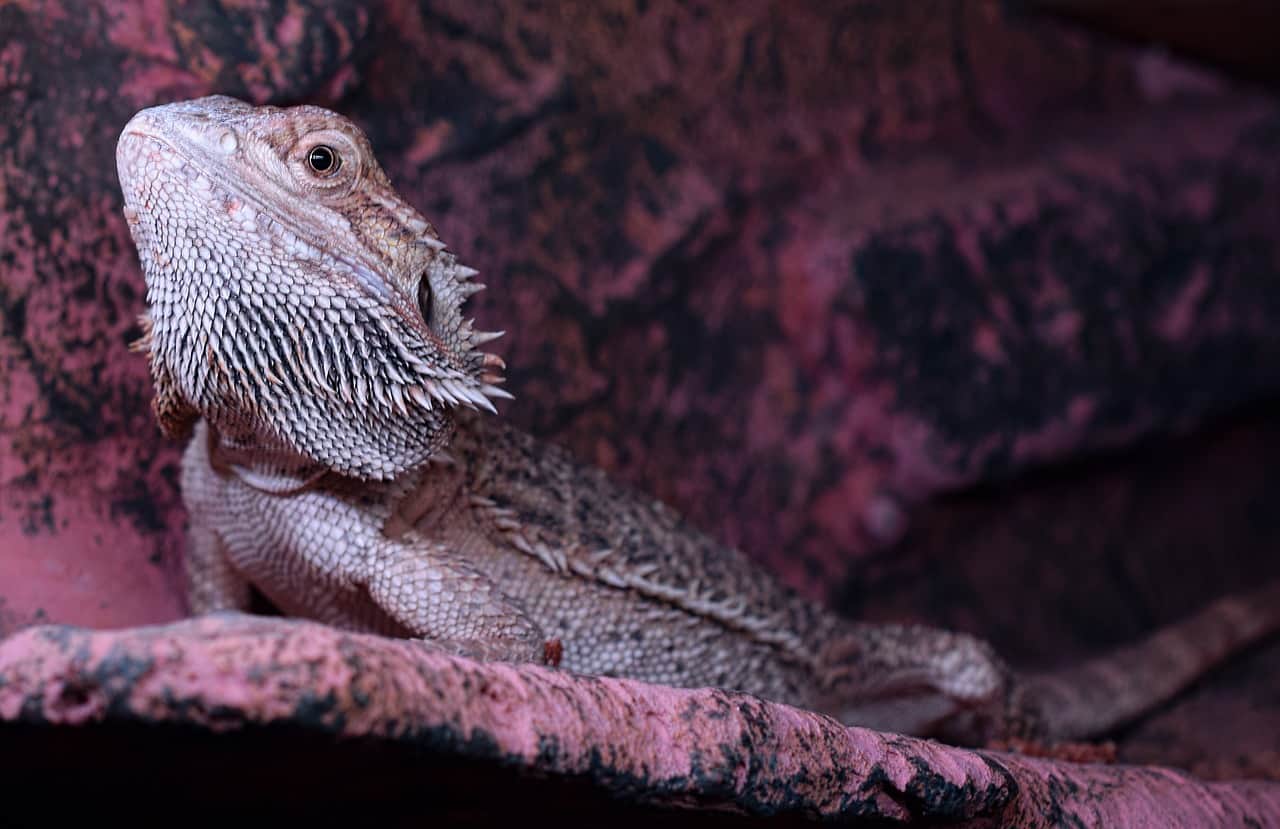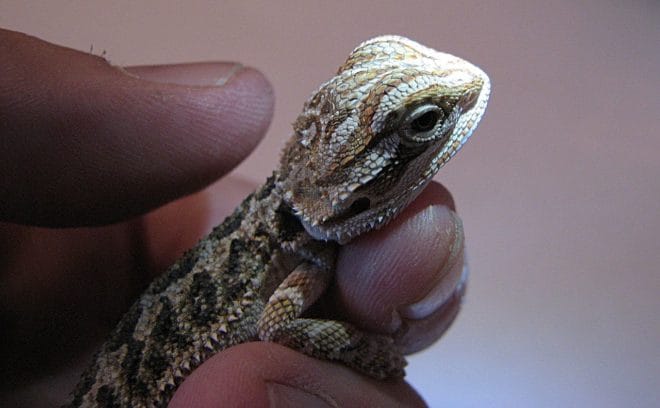Are you looking to own your first reptile? Maybe you are a herpetologist seeking another lizard to add to your keep. The bearded dragon is a friendly lizard suitable for any household, as their adaptability to captive care and docile disposition makes them an excellent pet for novice reptile owners.
“Beardies,” as they are affectionately referred to, dwell in trees and on the ground in their Australian habitat in the wild. They are frequently seen with their mouths wide-open, or what some refer to as “smiles,” though it is actually their primary method of self-cooling.
They are quite simple to take care of and enjoy feeding on insects and lush greens. In captivity, Bearded dragons are comfortable with most forms of handling, and spend the great majority of their time basking in the light
If this friendly lizard has captured your attention and you’re interested in learning how to care for these animals and how to acquire them, keep reading to find out what to anticipate as a Bearded dragon owner.
Why Are They Named “Bearded Dragons?”
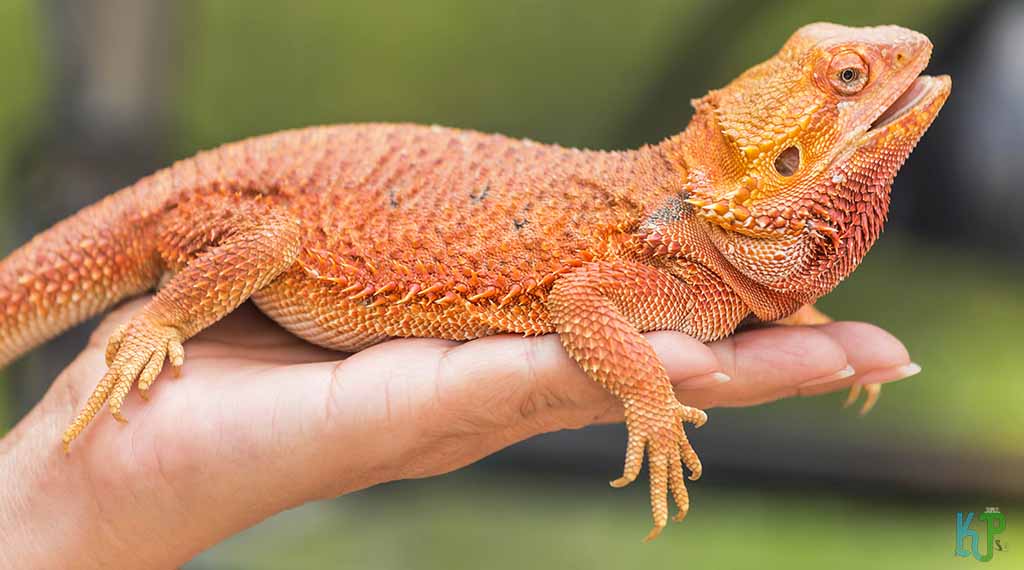
These creatures are large Australian natives that live in trees and on the ground for roughly about half of their lives, respectively. They have spines on either side of their bodies that extend to the base of their tails, and they could reach a length of around 15-20 inches, from their snout to the tip of their tail. The unique skin flap beneath their chin that extends out to frighten off predators also resembles a beard, earning the lizard its namesake.
8 species of Bearded dragons constitute the Pogona genus. Ironically, they didn’t always get classified this way, once belonging to the Amphibolurus genus grouping, until subsequently being reassociated.
The Pogona vitticeps, the most popular of the six species, have proved itself as friendlier and easier to care for than the other five. Reptile owners like these particular reptiles for three primary reasons.
- It is easy to locate several reputable breeders as they are located all around the US.
- They tolerate handling well and settle into captivity seamlessly.
- Since they are not nocturnal like some lizards, they are more active during the day.
In the 1980s, a small number of Bearded Dragons were imported from Germany, so most of those found in the US today are actually their descendants.
Bearded Dragon: The Full Care Sheet
The following care instructions are for the Pogona. vitticeps Bearded Dragon and the suggestions will differ slightly based on which of the six species you choose to take in as a pet. However, the majority of our guide below applies to all six species.
A Resting Stick
This lizard’s natural habitat is a wooded, semi-desert Australian setting. These semi-arboreal reptiles like to spend their time on branches or the ground. Therefore, they have a few simple requirements:
- A glass tank with 36 cubed ft. of space
- An infrared lamp for basking, as well as a UVB light source
- Insects and leafy greens constitute their diet
Enclosure Set Up
A Bearded Dragon’s enclosure should be made of glass with a screen on top. Their tank should be four to six feet long, three feet tall, and two feet wide. This size tank is not just sufficient for the lizard’s size, but it helps to keep the temperature inside from getting too hot. A larger tank is never a bad thing either.
To further mimic their native environment, rocks and branches should be placed in the tank to enable them to have shade after basking and hiding places to hide when they choose to do so.
Create a comfortable and spacious home for your reptile with the OIIBO White 67 Gallon Reptile Terrarium.
Heating And Lighting Situation
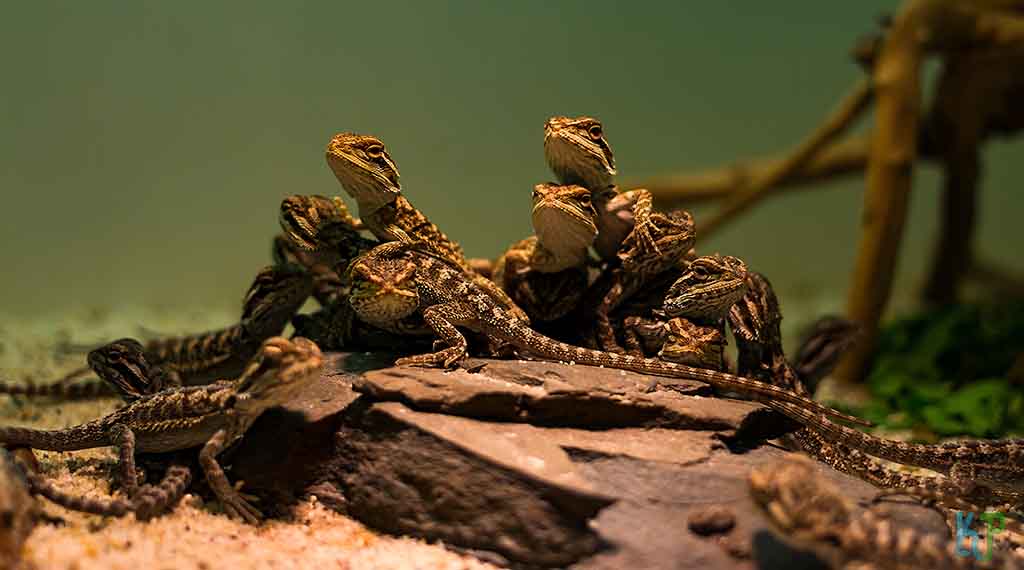
Bearded dragons are diurnal animals, meaning that they are most active during the daytime hours. That means that they need a regular schedule of 12 hours of darkness and 12 hours of light every day.
They are diurnal lizards, meaning they are awake and active during the day. They should get 12 hours of daylight and 12 hours of darkness every day. They require UV light for its inherent health benefits to their bodily systems. Combined with calcium supplements, ultraviolet rays help to reduce conditions such as Metabolic Bone Disease and Nutritional Secondary Hyperparathyroidism.
UVB bulbs should be changed every 6-12 months as well as monitored using a UV radiometer. Additionally, Bearded Dragons require 40 to 75W infrared lamps to bask in. While it is fine to let the creature bask in the natural sunlight as well, the animal must be supervised at all times.
The dragon’s tank should be separated into two climate areas, with a warmer basking side, and a cooling side. The temperature in both should be monitored with two separate thermometers. Basking temperatures should be between 95°F-105°F, while the rest of the tank should be 80°F, though it is ok for them to be a bit lower at nighttime.
One recommended way to keep the temperature stable is to use heating pads under the tank, as they will keep any of the tank accessories from getting too warm.
During basking, the Bearded dragon’s ribs expand, making them look “flat.” This is done for the animal to maximize the amount of heat they absorb. If a Bearded dragon frequently opens its lips and displays an exaggerated “smile,” the tank may be too warm. By spraying the tank every 48 hours, the humidity in it could be leveled between 30% and 40%.
Your geographic area and the particular species of Bearded Dragon you keep will be the determinant of the exact humidity and temperature the tank should be at. The rule of thumb is that humidity is generally low and temperatures are fairly high in all cases, however.
Ensure your bearded dragon gets the heat and light they need with the Zoo Med Bearded Dragon Lamp Combo Pack.
Tank’s Substrate
For an authentic substrate, sand or gravel might be used. It is important to remember that could be harmful to your dragon’s gastrointestinal tract if it is inadvertently ingested. Newspapers and paper towels are both safer and simpler to clean and dispose of. This substrate should be cleaned regularly, and more frequently if signs of bacterial growth begin to manifest.
Bearded Dragon’s Diet
Beardies are omnivores in the wild, eating spiders, insects, worms, tiny rodents, greens, flowers, fruits, and even smaller lizards. They are opportunistic predators that attack their prey when it is within striking distance.
Their diet in captivity is altogether simple. When they are hatchlings under 2 months old, they will eat 2 or 3 times daily. The diet should consist of 30% veggies and 70% tiny crickets. Crickets, super worms, and even pinky mice can supply the Bearded dragon’s protein. They should consume vegetables irrespective of their age, however.
They should eat every day as a juvenile and have a balanced diet of leafy greens and bugs, with greens supplied daily, while insects should be only provided every other day.
A Bearded Dragon should be fed on a daily basis as an adult with a diet consisting mostly of green vegetables and crickets. To keep them healthy, calcium and vitamin D3 supplements should be included in their diet. Morning is the best time to feed your Bearded dragon since it helps them to digest its meal throughout the hottest portion of the day.
They are particular about hydration if they have to receive their water from a deep bowl. As a result, it is important to provide them with clean water from a shallow water dish at all times.
Keep your adult bearded dragon healthy and happy by feeding them Fluker’s Buffet Blend Veggie Variety Diet.
Upkeep Of Maximum Health Of Bearded Dragons
Consistent and proper husbandry is one of the best ways to keep your Bearded Dragon healthy. Bathing your dragon is not entirely necessary, but soaking it in lukewarm water 2-3 times each week will help them defecate. Like most reptiles, they also shed, and they will do so in pieces over just a handful of days. How often they shed depends on the time of the year, as well as their diet.
When they are feeding frequently in the spring and summer, they are more prone to lose their skin. Any unusual shedding may occur at their fingers and tail tip. If this occurs, they may need to be cleaned to avoid infection.
Tank Cleaning
Each week, when cleaning their tank, you should entirely remove and replace the substrate, which is another reason that while sand is an option, it isn’t the first choice since it is considerably harder to fully replace.
The tank should be cleaned every two weeks using diluted soap and water. Spot clean the substrate frequently if there is old food, excrement, or spilled water visible on it. You should also be inspecting your Beardie’s feces to make sure they are pelleted and brown with a semisolid urate.
If you see any abnormalities in the waste or notice signs of blood, this might be an indication of intestinal worm infection and you should get your dragon to the vet as soon as possible.
Clean your bearded dragon’s tank with ease using the AquaMiracle 6 in 1 Aquarium Cleaning Tool Kit.
Lifespan Of A Bearded Dragon
In captivity, Beardies can live between 7 and 12 years. If properly taken care of with good husbandry, they tend to be generally healthy animals with minimal ailments. Those that do come about are generally due to inadequate care.
A lack of UVB exposure, a phosphorus excess, or a calcium shortage in the diet might cause metabolic bone disease (also called nutritional secondary hyperparathyroidism). Your dragon dragging its legs, tail, or torso rather than standing up straight is a sign of this illness as well.
When dragons are confined together, cage aggressiveness can potentially cause trauma. This species is less prone to renal and cardiac disorders as well as intestinal impaction, which is frequently caused by ingesting substrate.
Behaviors Of A Bearded Dragon
This type of lizard is typically hostile to other lizards while in the wild or their natural habitat. Several reptiles will form a social structure with one dominant lizard if they reside in the same region. They could clash, pursue, or even mount one another. The group’s dominant lizard will often challenge others, but it is also the group’s most social.
For food, bearded dragons will vie with one another. They accomplish this by twisting their legs and bobbing their heads, a behavior known as circumduction. They will also lock eyes and look at each other intently. When feeling threatened, whether by a predator or by a dominant dragon, their “beard” will sprout, giving them a menacing and intimidating appearance.
Even though Bearded dragons are quite friendly to people, they do not exhibit similar behavior when kept with other dragons. Because of looming hostilities and the potential for a social order establishment, keeping these reptiles apart is generally advisable. When left alone, Bearded dragons are content and amiable reptiles. They will occasionally hide, but only because they like to alternate their locations between the shade and their basking area.
Handling A Bearded Dragon
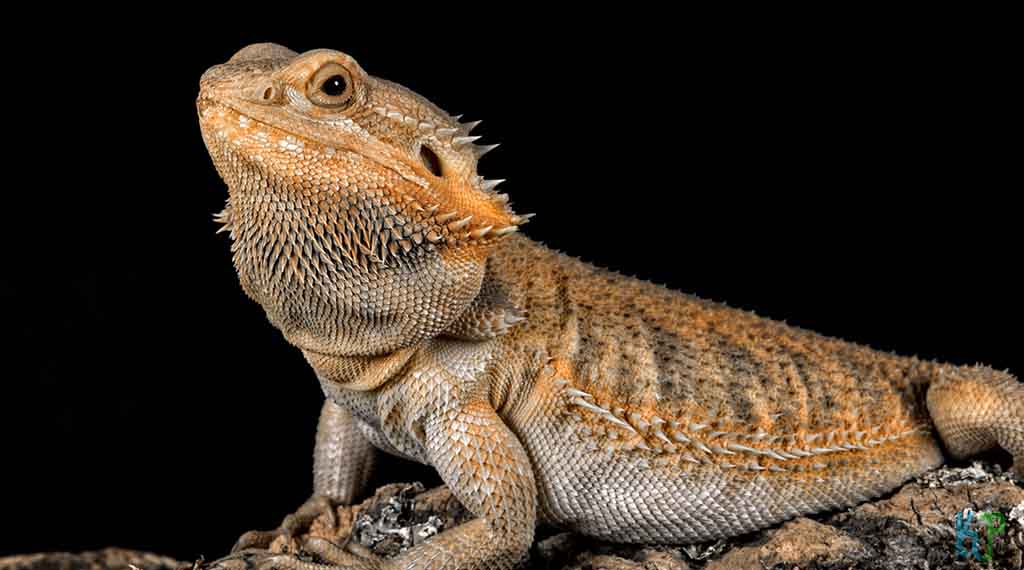
There are some hard rules to handling a Bearded dragon. Chief among them is to never pick them up by the tail since they can fall off, but won’t grow back. Another is to prevent the spread of bacteria such as Salmonella in both directions by washing hands prior to and after handling the reptile.
Beardies are docile towards people for the most part. While they may attempt to squirm away when first picked up, they tend to be good about being held and might even lay on their keeper’s shoulder calmly shortly after. Holding a Bearded dragon in a particular manner is important too. They will feel more secure if you hold them flat rather than cradling them.
When only being introduced to a new dragon, make sure to give them at least 3 to 4 days to get used to their new human host. Then they can be handled but only for short periods of time in order to not induce a stressful reaction.
Appearance Of A Bearded Dragon
Beardies have thick tongues, spherical pupils, and lateral spines that extend from the base of their tails down to their flanks. They have triangular-shaped heads that are big and broad. Additionally, they have “beards” that swell and act as a defensive mechanism when they perceive a threat. Compared to females, males often have darker shades and more pronounced patterns. They frequently have a broader tail base as well.
A Bearded Dragon may grow to be 15 to 20 inches long. This may appear large to inexperienced herpetologists, yet without its tail, their snout to vent length is only 10 inches! An adult weighs between 230g and 520g and should achieve this weight between the ages of 18 and 24 months.
Depending on the species and morph, Beardies can range from brown to orange. Sandfire variants are more reddish, whereas pastel lizards are more silute or yellow in color. To maintain a specific appearance, particular bloodlines are bred in captivity. These include the Silback which is bred without scales, as well as the Leatherback which is bred with smaller ones.
Courtship And Reproduction
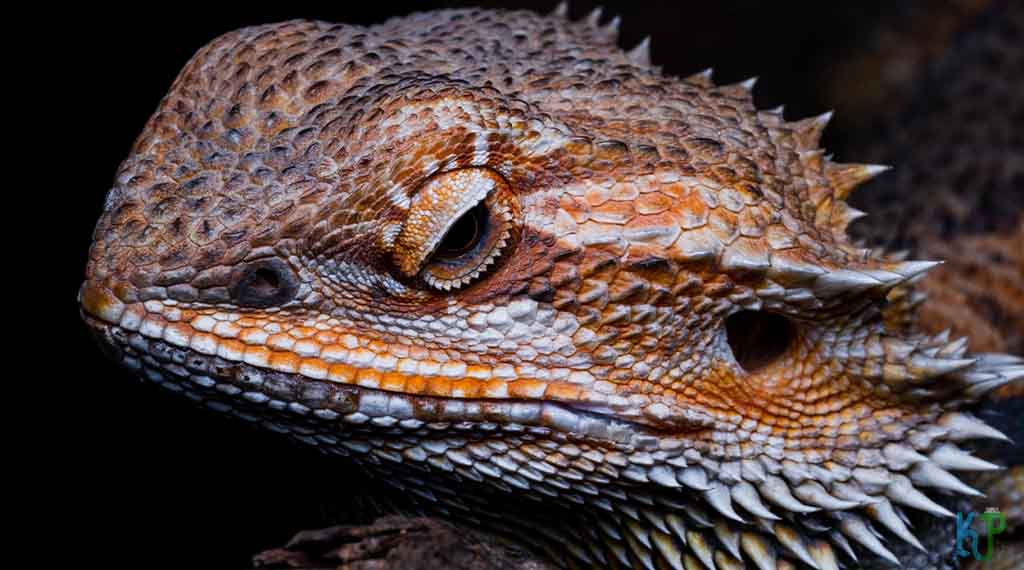
A male will darken his throat and circulate around a female when he wants to pursue her. If she accepts, she will flatten her body to aid copulation, during which the male will bite the female’s neck. This mating transpires in the spring and early summer when the female’s progesterone levels are elevated. This occurs after brumation, so the reptiles should be brumated before breeding.
Because Bearded Dragons bury their eggs, they require a nest box; a place with 10-inch deep sand or dirt should suffice. Females, unlike other reptiles, will lay three batches of up to 35 eggs each. After the female lays the eggs, they should be taken from the nest box and placed in an incubator with water and vermiculite soil replacer at 82°F-86°F for 3-4 weeks before hatching.
Newborns have an egg tooth that they utilize to pry themselves free from their shells. Bearded dragons should be separated from one another as soon as they hatch, as they can create a social structure similar to adults.
Price Point Of A Bearded Dragon
Bearded dragon hatchlings can be acquired at a price point in the $30 to $60 range, but those over 6 months of age (juveniles and adults) can cost $100 or more, depending on the point of purchase.
Bearded Dragon Care Guide Summary
The sociable Bearded Dragon is an excellent choice for beginner reptile keepers. They are fairly easy to care for and manage because of their mild temperaments. They are also adored for their “smiling” expressions and distinctive personalities.
Few reptiles can compete with this Dragon for a place in reptile owners’ hearts. The Leopard Gecko is also an excellent first reptile.
The Crested Gecko and Blue Tongued Skink are two lizards that might be difficult to keep. These creatures are not as open to human contact or presence as a Bearded Dragon, but they do not require as much heat or light management to thrive.
Overall, Beardies are laid-back lizards with a simple diet. They do have heating and lighting needs, but a proper setup can easily get these to be met, making them a fantastic addition to a home and a family.
Are you a new bearded dragon owner? Are you confused about what kind of fruit you can feed your pet? Look no further! In our beginner’s guide, we have compiled a list of safe fruits for bearded dragons to enjoy. Keep your pet healthy and happy by reading our article and learning about the delicious and nutritious fruits that can be a part of their diet.
Frequently asked questions:
Can bearded dragons eat mushrooms?
Bearded dragons should not be fed mushrooms as they can be toxic and cause health problems. While some mushrooms are safe for human consumption, they may be harmful to reptiles due to their unique digestive system.
Can bearded dragons eat beetroot?
Bearded dragons can eat beetroot as part of a balanced diet, but it should only be given in moderation. Beetroot is high in oxalic acid, which can bind to calcium and prevent its absorption, leading to potential health issues like metabolic bone disease. It’s best to offer beetroot occasionally as a treat, and not as a staple food for bearded dragons.



